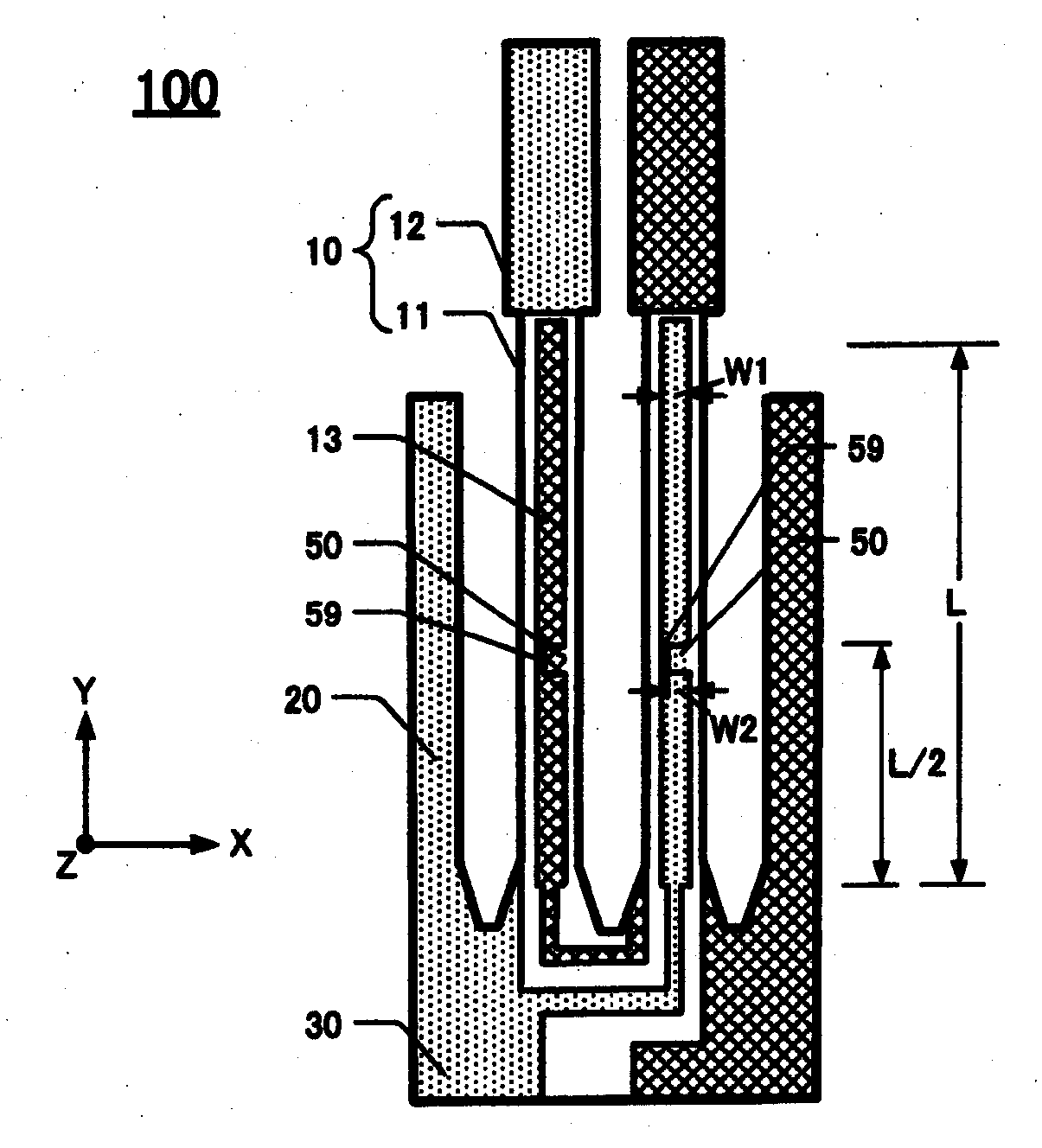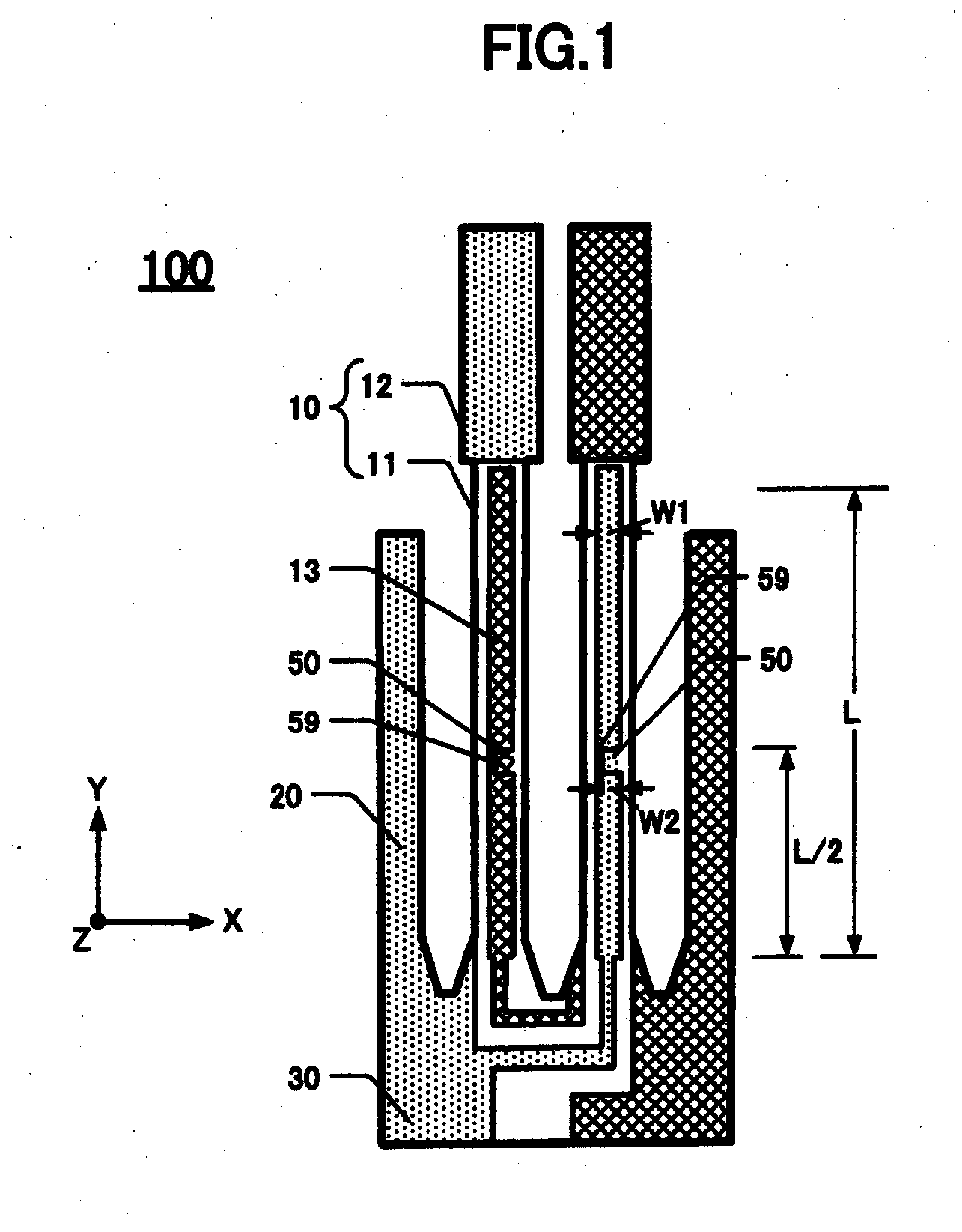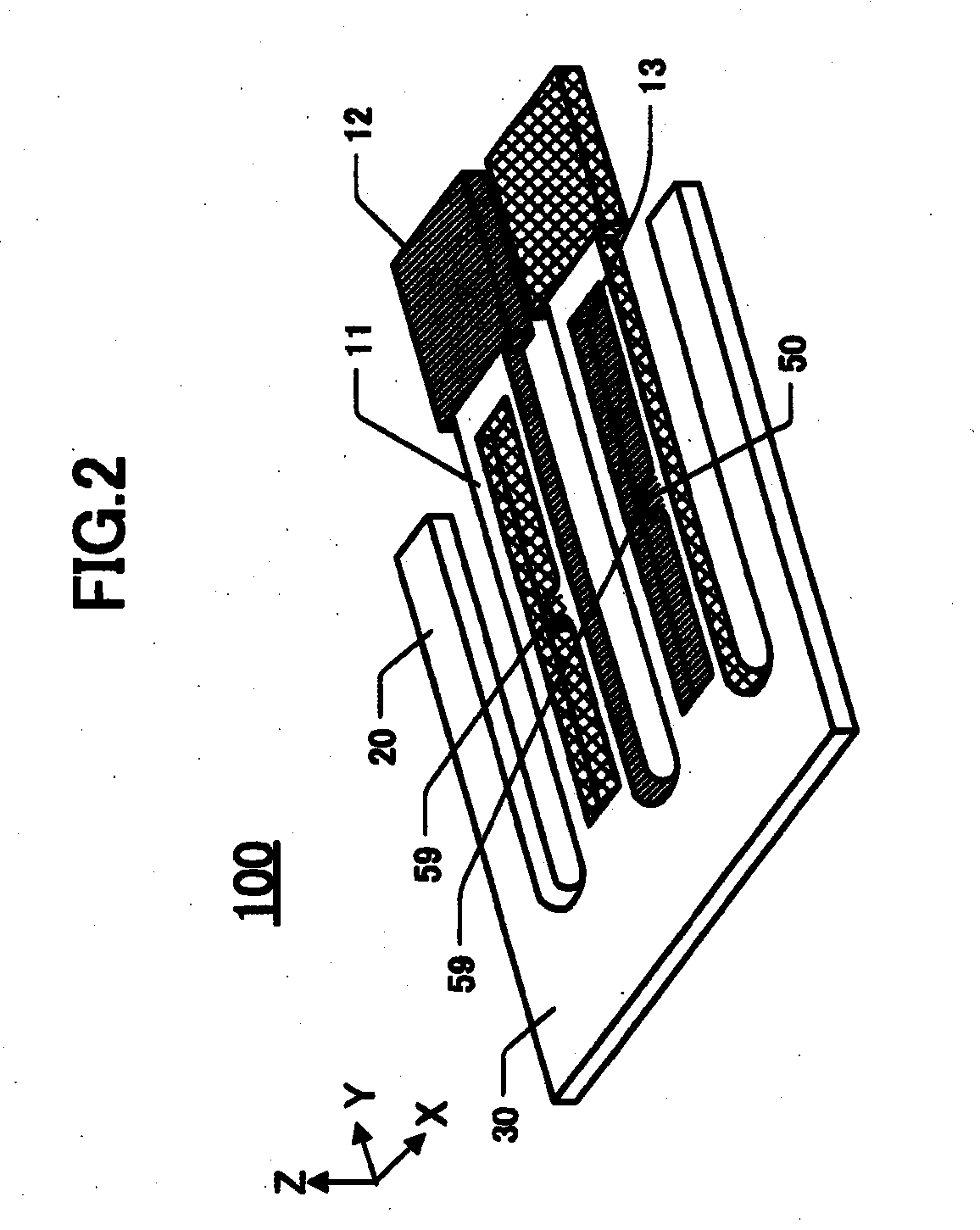Piezoelectric vibrating pieces, frames, and devices
- Summary
- Abstract
- Description
- Claims
- Application Information
AI Technical Summary
Benefits of technology
Problems solved by technology
Method used
Image
Examples
first embodiment
of Tuning-Fork Type Piezoelectric Vibrating Piece
[0043]FIG. 1 is a plan view of this embodiment 100 of a tuning-fork type piezoelectric vibrating piece. This embodiment comprises a pair of vibrating arms 10 extending in the Y-axis direction (which is a designated longitudinal direction), a base 30 made of a piezoelectric material and formed continuously with the vibrating arms 10. In this embodiment the length of each vibrating arm 10 is about 1.25 mm and the length of the base is about 0.15 mm. The width (in the X-axis direction) of each vibrating arm 10 is 55 μm. This embodiment also comprises a pair of supporting arms 20 extending in the Y-axis direction. The supporting arms 20 are situated outboard of the respective vibrating arms.
[0044]The vibrating arms 10 extend in the Y-axis direction from the base 30. On each vibrating arm 10 a respective groove 13 is formed on the upper surface (visible in drawing) and a respective groove 14 (not visible in drawing) is formed on the lower ...
second embodiment
of Tuning-Fork Type Piezoelectric Vibrating Piece
[0056]The piezoelectric tuning-fork type vibrating piece 110 according to this embodiment is shown in FIG. 4. The piece 110 has substantially the same configuration as of the first embodiment 100 except for the configuration of the rib feature 51. The rib feature 51 is described below, but other detail being the same as in the first embodiment are not described further.
[0057]A respective rib feature 51 is situated in each groove 13, 14. In each groove, the rib features 51 extend from each of the +X and −X walls of the groove, and the respective rib features51 extend toward each other in the groove. That is, the rib features 51 in the groove form an opening 59 that is narrower than the respective groove 13.
[0058]As FIG. 4 shows, the length of a groove 13, 14 is denoted L. In this embodiment the rib feature 51 is situated at a distance 3 / L from the base toward the distal end of the groove. That is, the position of the rib feature 51 is ...
third embodiment
of Tuning-Fork Type Piezoelectric Vibrating Piece
[0068]FIG. 8 is a plan view of a third embodiment 120 of a tuning-fork type piezoelectric vibrating piece. The piece 120 has substantially the same configuration as the first embodiment 100, except for the rib feature 52. Thus, the rib feature 52 is described below in detail while omitting supererogatory descriptions of the other features.
[0069]FIG. 8 shows that, in this embodiment 120, a respective rib feature 52 is situated in each groove 13, 14 (grooves 14 not shown because they are on the under-surface of the vibrating arms). Thus, each groove on the upper surface and each groove on the lower surface has a respective rib feature. As depicted in the figure, the rib feature 52 in one of the grooves 13 extends from the +X wall of the groove, and the rib feature in the other of the grooves 13 extends from the −X wall of the groove. The ribs 52 are configured similarly in the grooves 14 on the under surface.
[0070]The width of each rib ...
PUM
 Login to View More
Login to View More Abstract
Description
Claims
Application Information
 Login to View More
Login to View More - R&D
- Intellectual Property
- Life Sciences
- Materials
- Tech Scout
- Unparalleled Data Quality
- Higher Quality Content
- 60% Fewer Hallucinations
Browse by: Latest US Patents, China's latest patents, Technical Efficacy Thesaurus, Application Domain, Technology Topic, Popular Technical Reports.
© 2025 PatSnap. All rights reserved.Legal|Privacy policy|Modern Slavery Act Transparency Statement|Sitemap|About US| Contact US: help@patsnap.com



